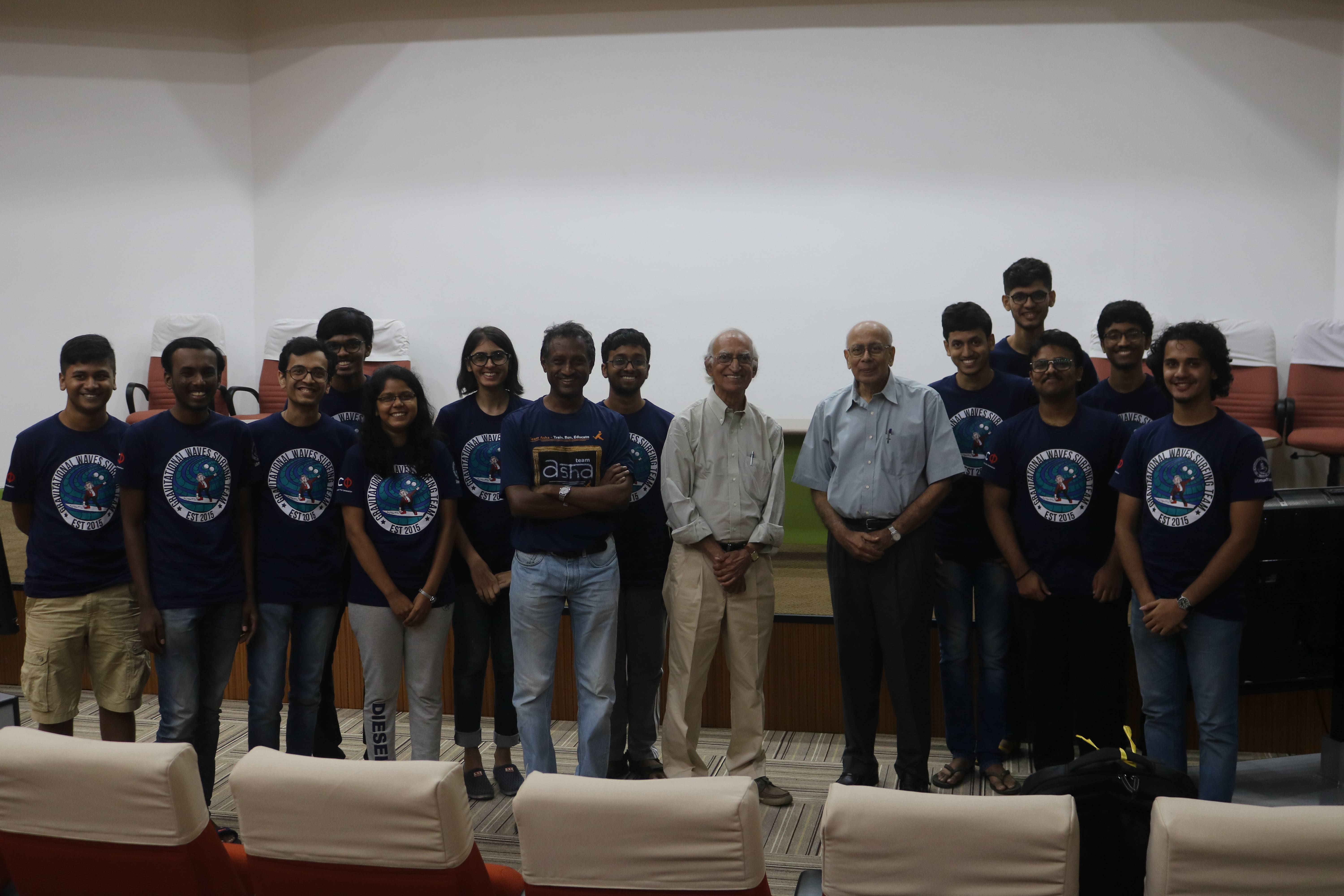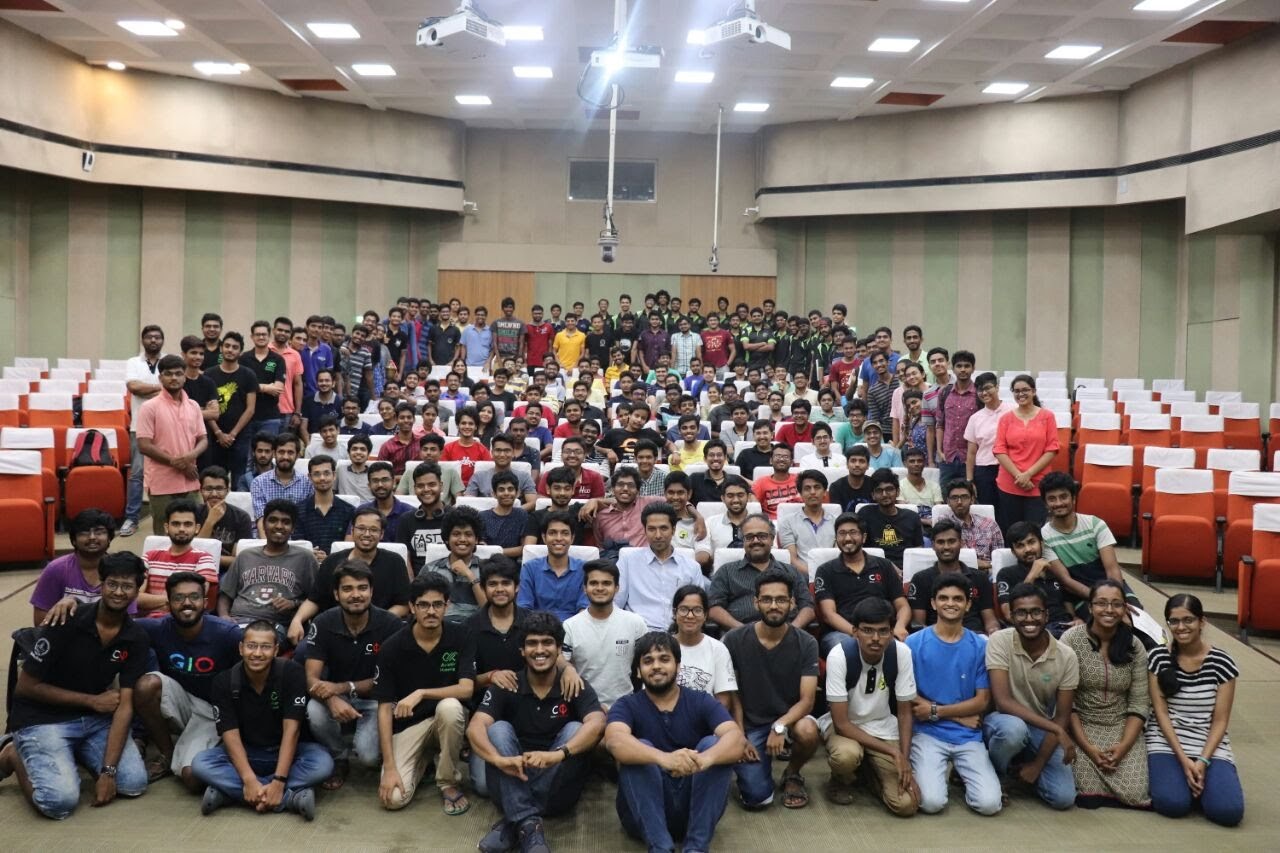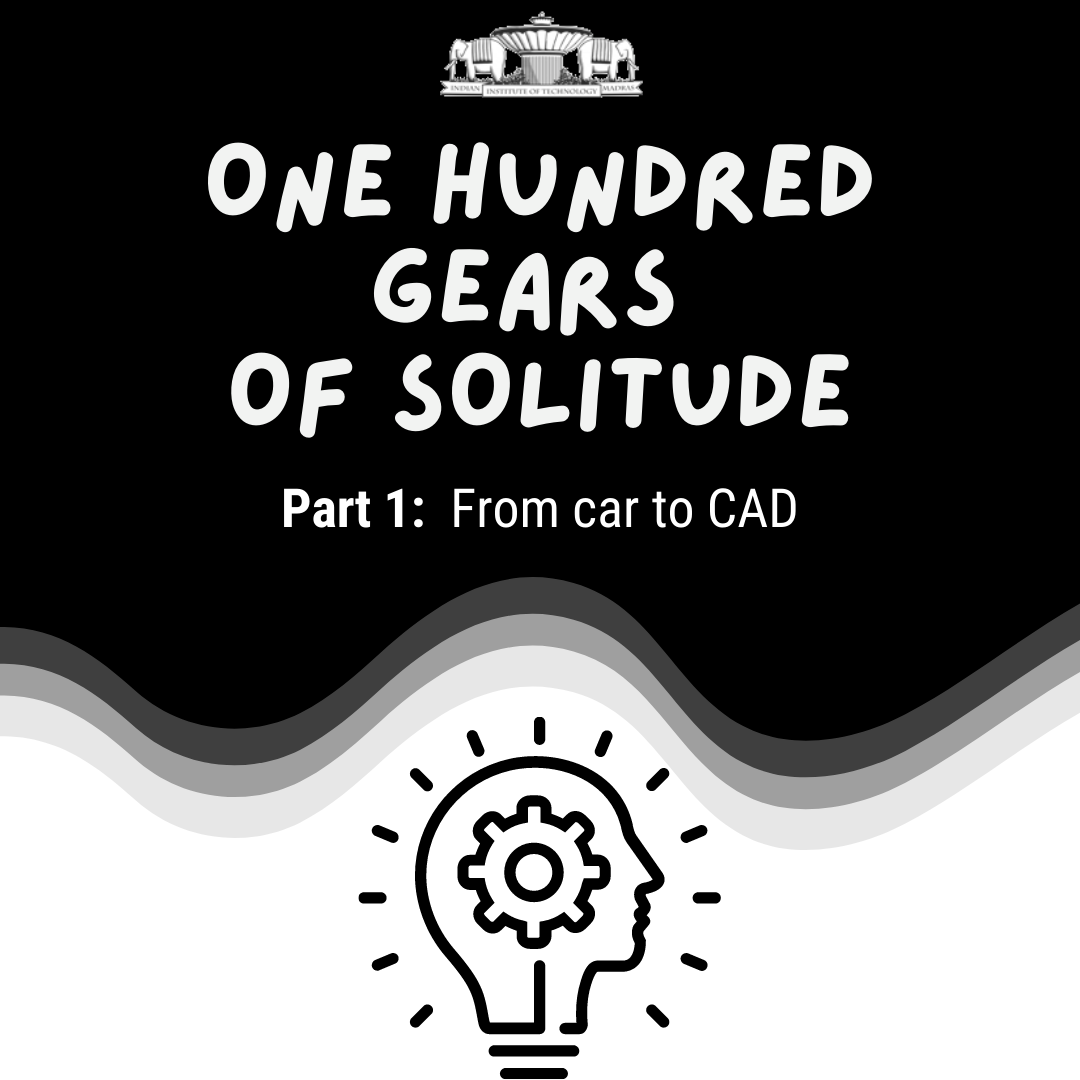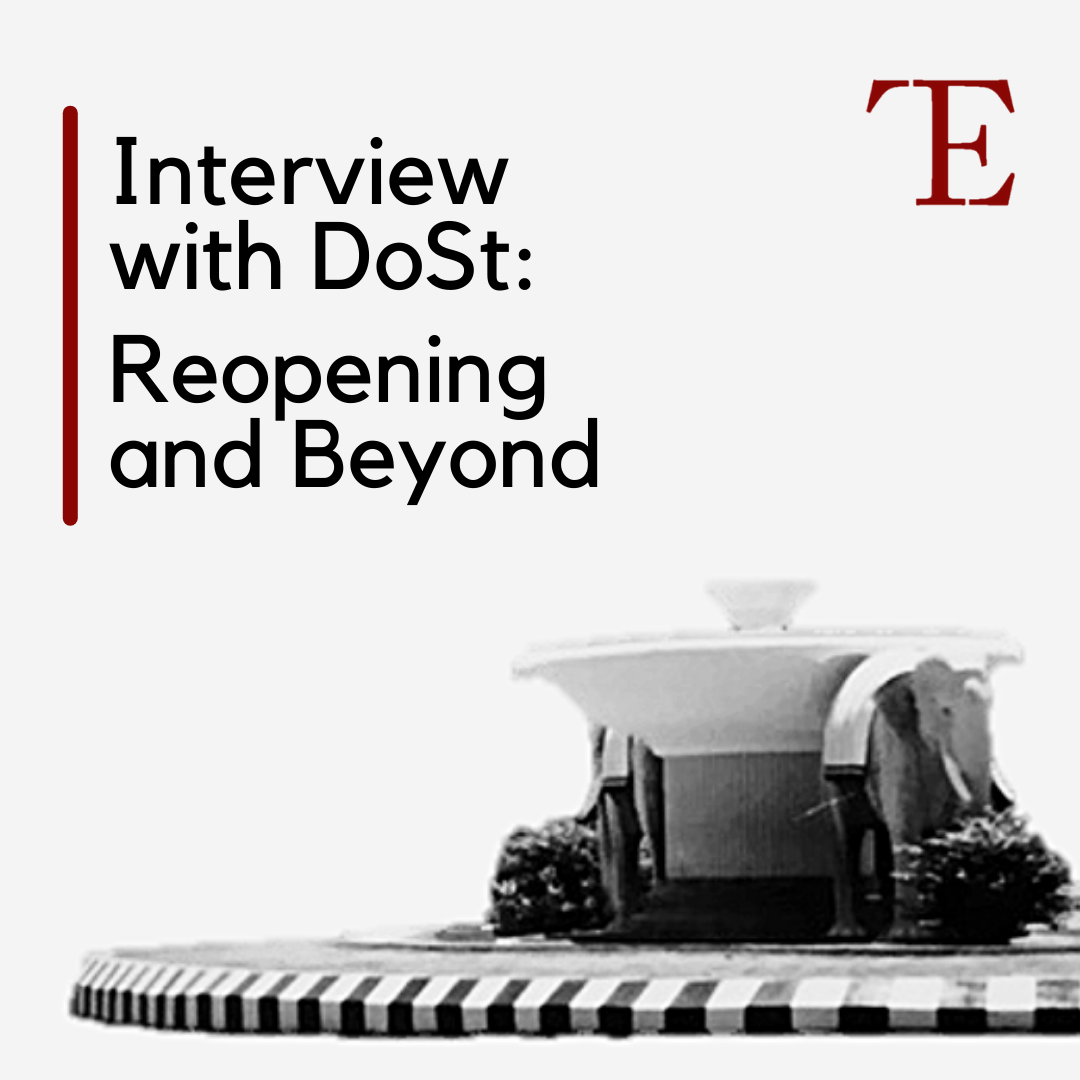Ahead of CFI Open House, we sat down with Horizon Club’s Heads, Pranav Satheesh and Nimisha Sharma, and three of their Coords, Sai Subramanian, Rahul Priyadarshan and Dev Charan, to find out more about what the Club is up to and how they have grown over the years. (We’ve also obtained some exquisite astro-graphs captured by the astronomers of our institute, so keep reading!)
T5E: Can you talk about the history of the Club?
Pranav: We are the oldest Club in CFI now. We were integrated into CFI only in 2008, but we had enthusiasts of astronomy running it back in the day. Even during the 90s, we had students, (who are now professors here) run the Club. Our Faculty Advisor himself was a student in IIT Madras, and he used to run the Club. Alumni turned scientific officers at different institutes were also members of our Club. A prominent example is Dr. Suresh Doravari from IUCAA who is now working for LIGO India. He contacted us, told us about his time in the Club and offered his help for anything we may need. So it’s pretty great that we have a good and long history.
Rahul: Initially, the Club was two separate Clubs- the Astronomy and the Physics Club. The Physics Club was mostly just what were called Boltzmann sessions.
Pranav: Every Saturday, people used to come and have a discussion. One person would present while the others would attend. That’s how the Club used to function before it was integrated into CFI. After we became part of CFI, we had the Physics and Astronomy parts of our activities managed by the same team. We still follow the weekly discussions, though. We meet every Saturday and sometimes on weekdays too.
We are helping the sciences of physics and astronomy reach others- especially freshies, by involving them in the projects. We also conduct workshops during Shaastra. We get a lot of requests for workshops! We conducted a workshop in a college in Kochi this year.
Rahul: In recent years, the number of freshies and second years in the sessions has increased. As a result, now we have sessions on more basic topics so that everyone can understand something and take away at least some of what they learned.
Nimisha: It is not only for the students. We open the sessions to the residents as well. The professors and their kids also come to the sessions, especially the observation sessions.
Pranav: Sometimes, apart from the sessions, we invite eminent professors to give lectures. Last year, we had Professor Balakrishnan giving a lecture on “Dynamical Systems in the Kepler Problem”, and recently, we had Professor G Srinivasan give a talk on “Millisecond Pulsars”.
Nimisha: It was a big event and we even had students from other colleges coming in to participate.

A mere strand of the massive Milky Way galaxy that we all are a part of, captured by Horizon Club!
T5E: How has the Club grown during your involvement?
Pranav: When I was a freshie, I used to attend the sessions and feel that while they were good, they were not very continuous. Except for the first few related sessions, they were mostly discrete topics that didn’t really connect with one another, but were interesting on their own. I joined as a Coord last year and took part in projects. Now, I think we’ve gone into the basics a little more and managed to introduce more continuity in the sessions.
Nimisha: For me, when I was a freshie, I used to attend the Club sessions as a regular member, for observations and all. I didn’t get much from the lectures, though. This year, however, we have planned lectures that everyone can understand. Also, my main observation is that the team has grown in size. It used to be very small. We had only two to three people managing whole observation sessions- now we have seven Coords and two Heads.
Every year, we conduct trips to different observatories. Last year, we went to Vainu Bappu Observatory, where Asia’s second largest telescope is located. We had twelve extra people accompany us. Some people also went to Sriharikota to watch the recent rocket launch.
Another change is that now most projects are software-based, as opposed to when they used to be more hardware-oriented (during my Coord year, for example). This allows people from more branches to take them up.
Rahul: Most of the projects we have are long-term projects; they can be extended using many more inputs and can be continued long-term.
T5E: What is the Club up to these days?
Pranav: In my view, the Club has two basic agendas. One is to help keep up the spirit and temperament of astronomy among the students and the residents of the institute. Because we are the only people who have a telescope. So if anyone wants to see the sky, they have just us!
Nimisha: It’s not only for the institute, though. It is open for the outside people as well, during Shaastra.
Pranav: Our second agenda is to reach out and spread astronomy to as many people as possible. One thing I have noticed is that there are a lot of people who like astronomy from other branches- not just Physics- and we need to reach out to them and let them know exactly what astronomy is as a science. And then, there are people from other branches who like physics a lot. We have been slow in the identification of these people because people attending our physics-related talks are mainly from the Physics department. In this regard, our CFI projects would help one learn a lot, as they enable self-learning apart from the sessions.
Rahul: I am in two projects right now. I learned quite a lot when I joined these projects It gave me an idea of what I wanted to do in the future. Questions within me, such as whether these fields were exciting enough for me to explore, found clearer answers.

The crater-pitted lunar surface of the half moon, basking in the golden sunlight
T5E: Can you elaborate on the projects themselves?
Nimisha: Right now, we have 7 projects. One is the Interplanetary Mission Analysis Tool- this project requires simulations of different trajectories and plotting the most efficient way to reach a planet.
We have one person who is plotting the trajectory of Chandrayaan, and another, the trajectory of Apollo. In the future, we wish to expand and combine this with the Lagrange Point Simulator project that we’re also working on. Our goal is to optimise the trajectory to a particular Lagrange point.
Rahul: This will mostly be done in MATLAB. If we want to send a spacecraft from Earth, we position it to a particular Lagrange point so that the fuel and resources required to send it to that point are minimum. Recently, the James Webb Space Telescope was positioned in space at the Lagrange Point. As part of the project, we will also be simulating the orbit of the James Webb Telescope.
Nimisha: Another project is an industrial, hardware-based one. The people involved are making a low-cost Hyperspectral Camera. It captures wavelengths of a wide spectrum instead of simply assigning red, green, or blue to each pixel. This helps one get a lot more output regarding the spectral components that a particular object has. For example, the team could scan a fruit’s different wavelengths and combine them to help us know whether the fruit is ripe enough or not! This project already exists, but it costs about Rs. 5-10 lakh, and our team is trying to cut down, to develop a version that costs only Rs. 1-2 lakh.
Pranav: There are two projects based on astronomy- Photometry of Variable Stars and Spectroscopy of Stars. These are actually ground-level projects as of now, but we are expanding them.
There are two ways of doing astronomy. One is by using the light we receive from the stars (photometry) and the other is by passing the same light through a spectroscope (spectroscopy) and analysing the different components obtained.
For the photometry part, we are taking the help of publicly available online data from various sky surveys like the SDSS (Sloan Digital Sky Survey). There are variable stars, those whose brightness changes with respect to time. There are different reasons for this phenomenon. One such reason is that the physics of the star is different from that of our Sun, which causes its brightness to dip every time it rotates. If we watch closely, we can observe the dip in the light curves. That is photometry. Spectroscopy is using spectral data from different sources. Different stars have different spectral lines, and one has to identify them using code. Here, we are using our own instruments.
Sai: The next project is a physics-based project. It’s called Flavour Phenomenology, and is based on particle physics. We’re trying to study the fundamental particles that everything is made of. Some of the particles are highly unstable and can’t be studied in ready-made situations, so we usually put them in very high energy collisions. They form unstable particles that decay into other stable particles before they even reach the detector. Based on where they hit and their momentum, we need to study the newly formed particles’ properties. There’s a package in Python called Flavio with a lot of commands that help us analyse these situations and the results from the corresponding experiments. It is hardly deterministic- mostly just probability- and so we are forced to take billions of collisions to put our finger on what’s really happening. Experimental data from CERN is available and we try to analyse our data, see whether our theory holds, and what else lies beyond that.
Dev Charan: Finally, we have a project in collaboration with the Raman Research Institute, Bangalore- the Sky Watch Array Network (SWAN). We are trying to build a radio telescope. Not just one- it’s a bunch of small telescopes spread over India that will work together as one. Each telescope of the array is called a tile, and we are trying to get our hands on one of the tiles from RRI by the end of this year or sometime early next year. We are effectively trying to build a 350-kilometre-diameter telescope from Bangalore to Chennai!

The allure of two of the most beautiful gas giants of our solar system, Jupiter and Saturn, captured by Horizon Club
T5E: Any other interesting trivia that you would like to share?
Pranav: Amit Shrivastva here was our Head two years ago. He graduated last year. There was a project in the Club, the Handheld Spectrometer, that he developed into a start-up and is currently working on.
Amit: When it comes to actual learning, I believe I’ve learnt a lot more from these Clubs than in class. The platform that CFI and the Clubs give you is wonderful. The project I’m working on now started out as a small one in the Club. With the support- especially financial- that CFI provides, we were able to do some iterations and demonstrate to the world. I believe that the experience of working on such a project really shows you the outside world. I am not even taking up my job as I continue to work on this! I would even give half the credits for a research internship that I got in the UK, to this Club.
As for other trivia, as Pranav mentioned, we’re the oldest Club in the institute. During the Diamond Jubilee, I had the opportunity to actually meet the man who started the Club! I met a lot of the alumni who were part of the Club and want to see and help it grow. And, it’s not just me; Yash Bhusare from the Radio Astronomy vertical is also pursuing what was once a small project. This really turned our lives around. This is basically it, I think. The opportunities that CFI gives you are amazing, really, and a lot of students here miss out on them. They should look a bit harder and we should try to reach out more effectively so that the purpose of CFI is served aptly. It’s a great chance to discover something you would love and pursue.
We would like to thank the members of Horizon Club for what they do, and for agreeing to do this interview with us!
Series by: Akash Reddy




